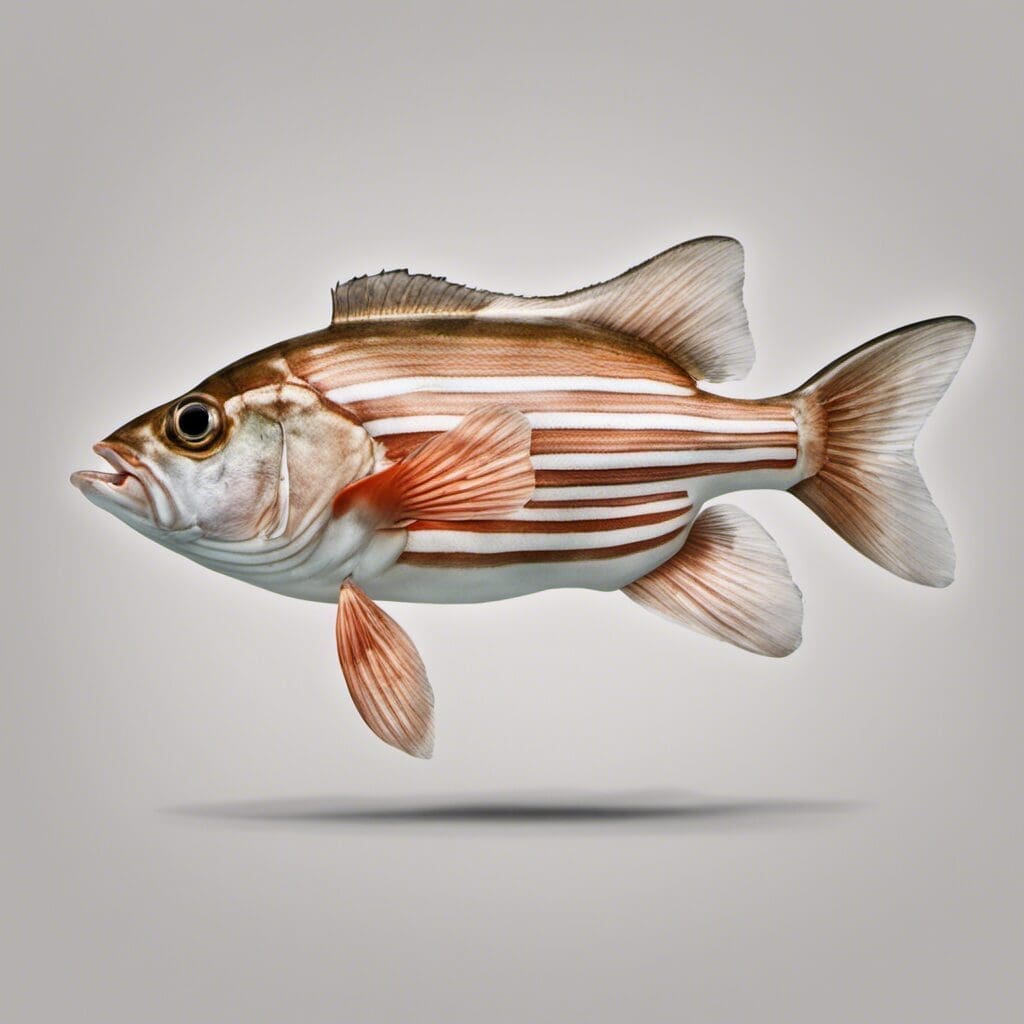Introduction
The Striped Seaperch (Embiotoca lateralis) is best described as a member of the surfperch family (Embiotocidae).
Conservation Status
The species has not been evaluated for a conservation status as of yet. It is considered common and is not currently listed as endangered or threatened.
Statistics
| Stat | Measure |
|---|---|
| Average Length | 10 inches |
| Length Range | 6 – 18 inches |
| Average Weight | 1 – 3 pounds |
| Average Lifespan | 10 years |
Distribution
Striped Seaperch reside along the Pacific Ocean. Their presence stretches from Alaska, U.S.A, to Baja California, Mexico. They do not typically migrate, instead, they prefer to stay within a small home range.
Habitats
Striped Seaperch are marine fish, meaning they live in saltwater environments. They can be found at a depth range of up to 75 feet. These fish are typically around rocky environments and kelp forests. They can also thrive in cold water temperatures of 55 – 60°C.
When and Where to See
While they are active year-round, the Striped Seaperch is most prevalent during spring. They are diurnal creatures, implying they are most active during the day.
Best Fishing Locations
Although Striped Seaperch can be found from Alaska to Mexico, there are a few prominent fishing locations worth mentioning:
- Pacific Ocean, Alaska
- Pacific Coast, British Columbia
- Monterey Bay, California
- Gulf of California, Mexico
How to Catch
The preferred bait for Striped Seaperch includes shrimp, worms, and mussels. Anglers typically use a light spinning reel when fishing for this species. The best time to fish for them is during the day, particularly in spring.
Identification Guide
Striped Seaperch are colorful, with bright orange stripes running lengthways along their bodies, which are separated by bluish lines. With an oval shape and a large dorsal fin, these fish are distinct among their species. They have no close relatives with the same coloring, making them easy to distinguish in the wild.
Culinary
Striped Seaperch are very much edible, having a delicate flavor when cooked. A BBQ method is preferred for cooking, and combined with a citrus marinade, it can enhance the taste profile. Nutritionally, they are high in protein and low in fat, although specific nutritional information varies based on age and size.
Additional Information
Striped Seaperch feed on algae, small fishes, and invertebrates. They sway their pectoral and tail fins rapidly to stir the sediments, revealing hidden food. As for threats, they are preyed on by larger marine species and humans. There is no recorded history of any cultural or historical significance related to the Striped Seaperch.
References and Further Reading
- Striped Seaperch
- California Department of Fish and Wildlife

